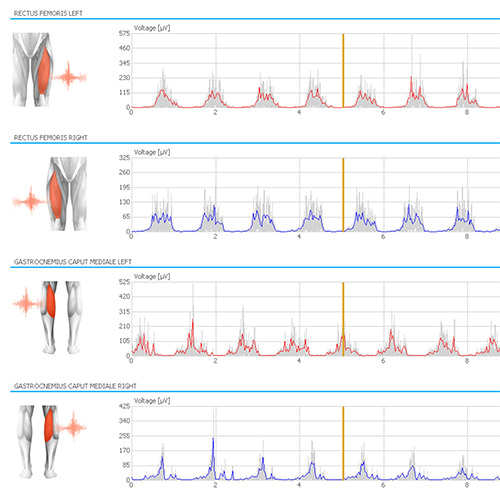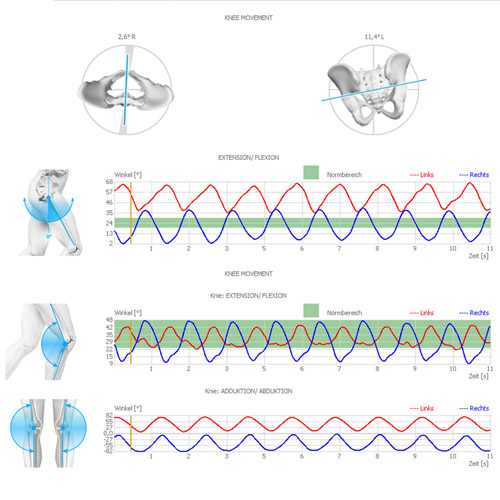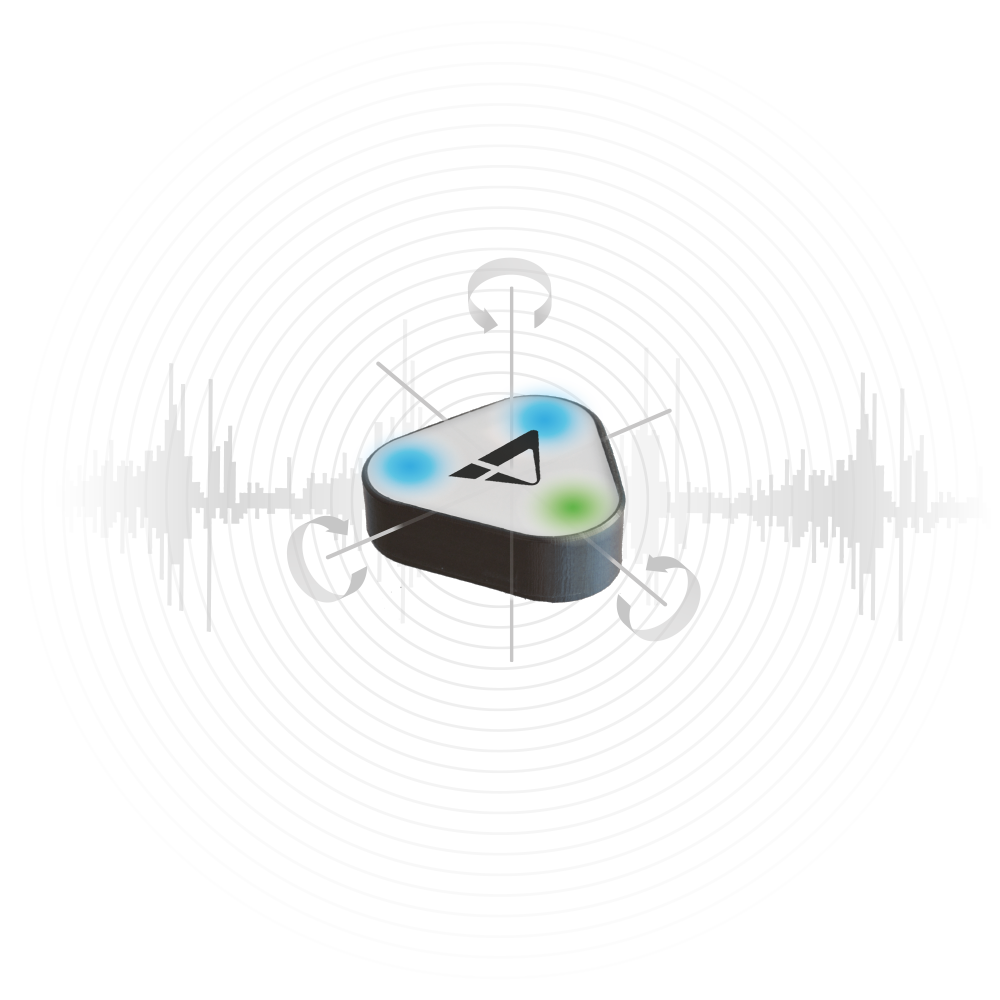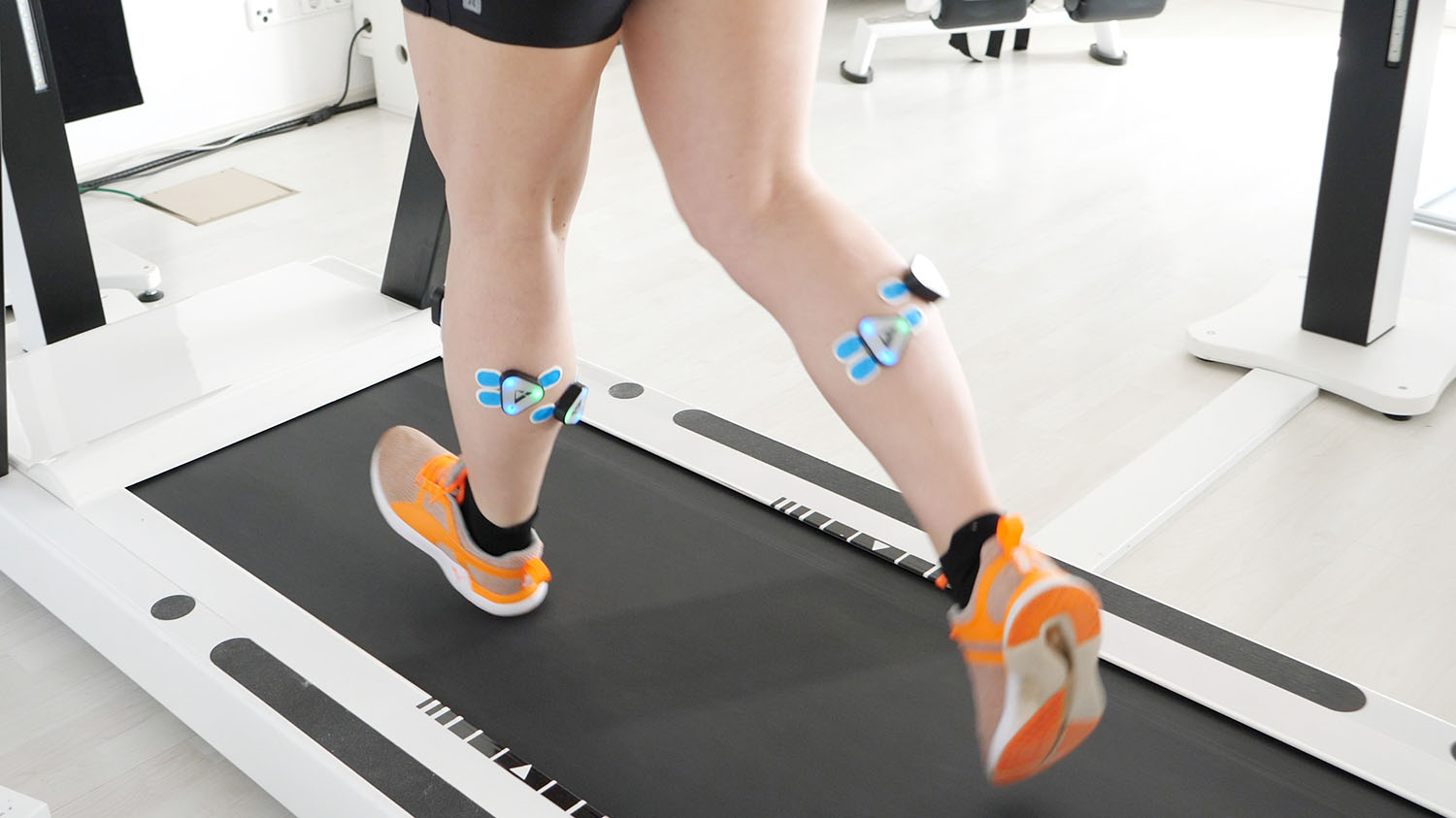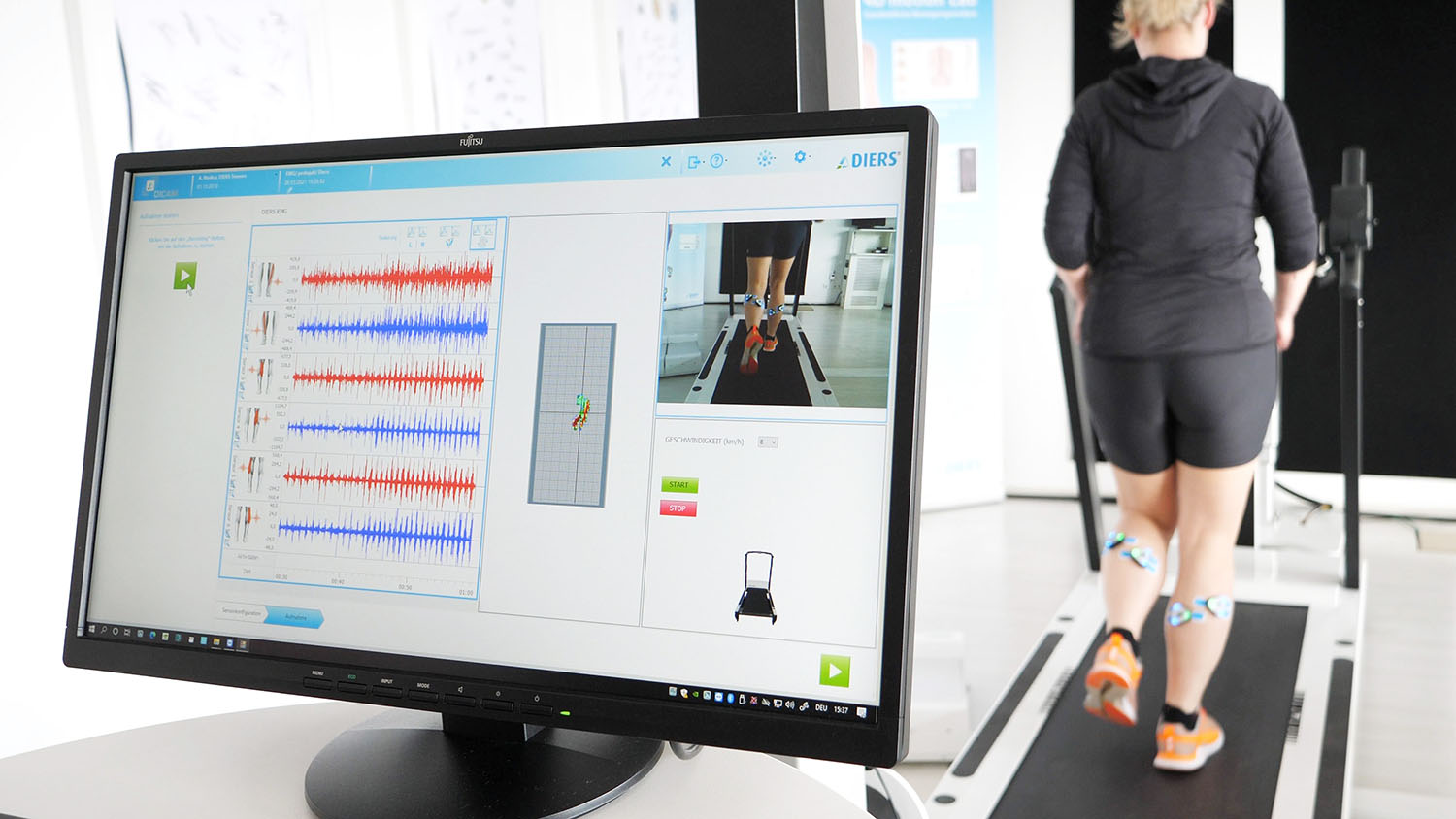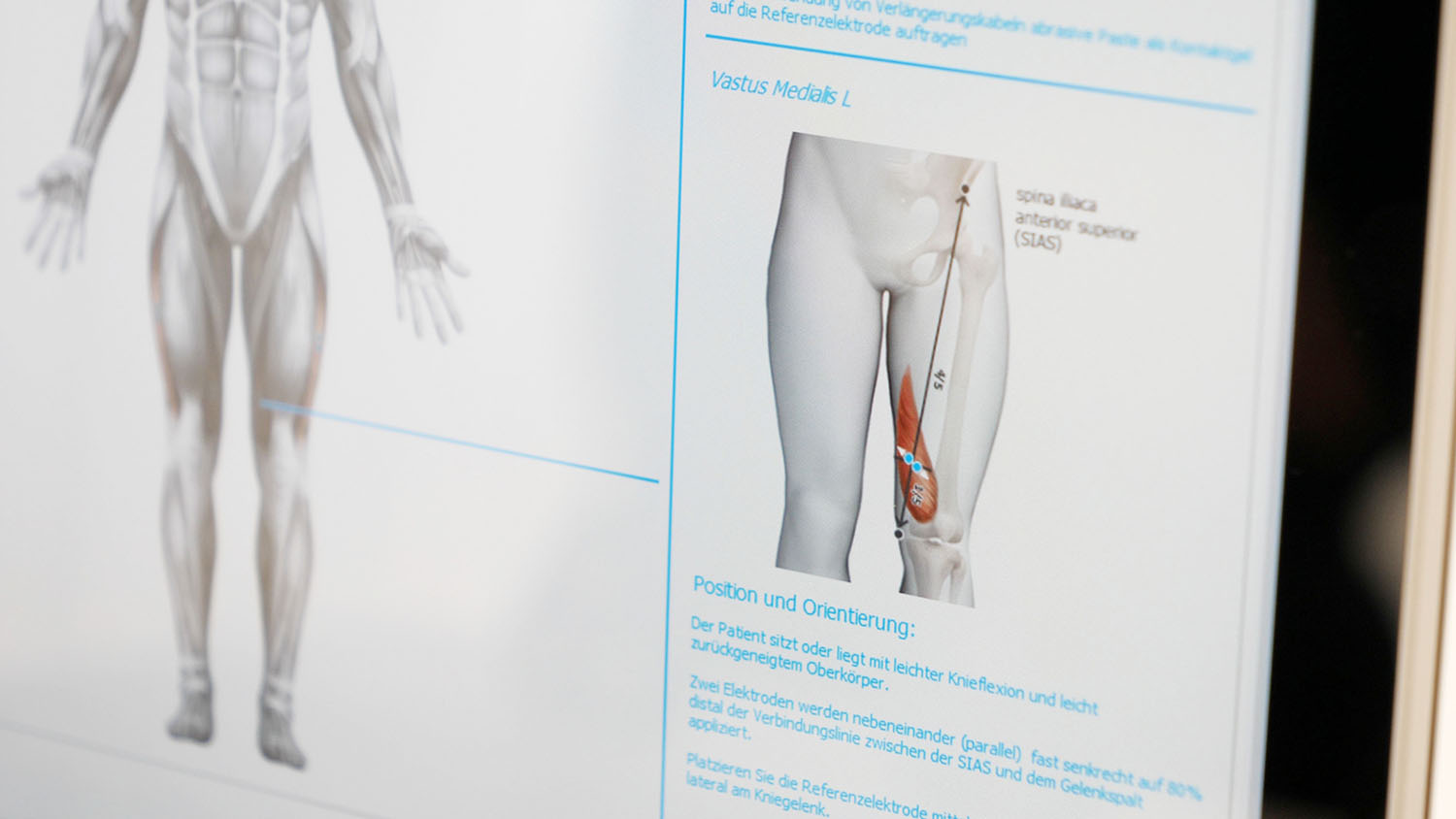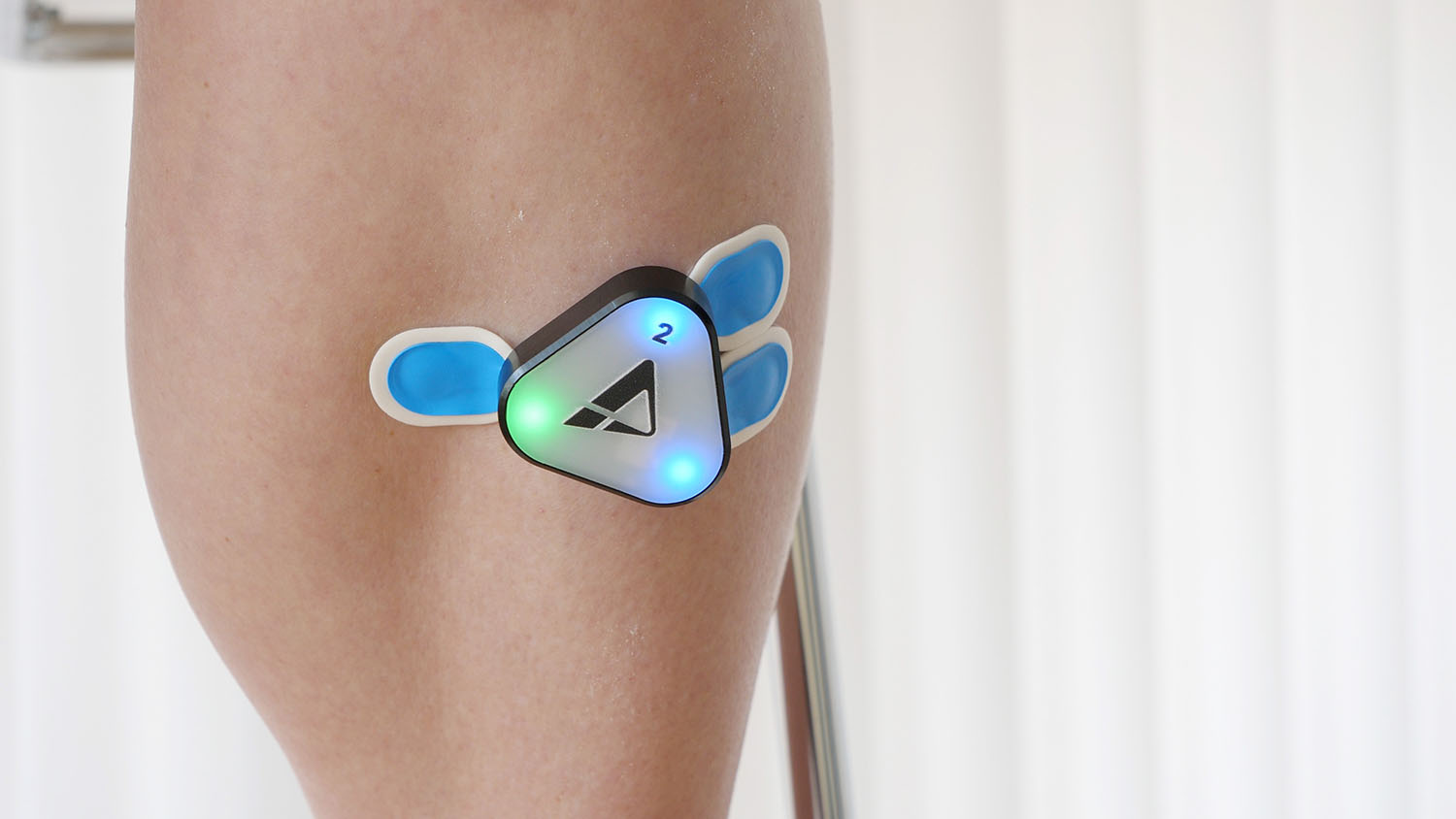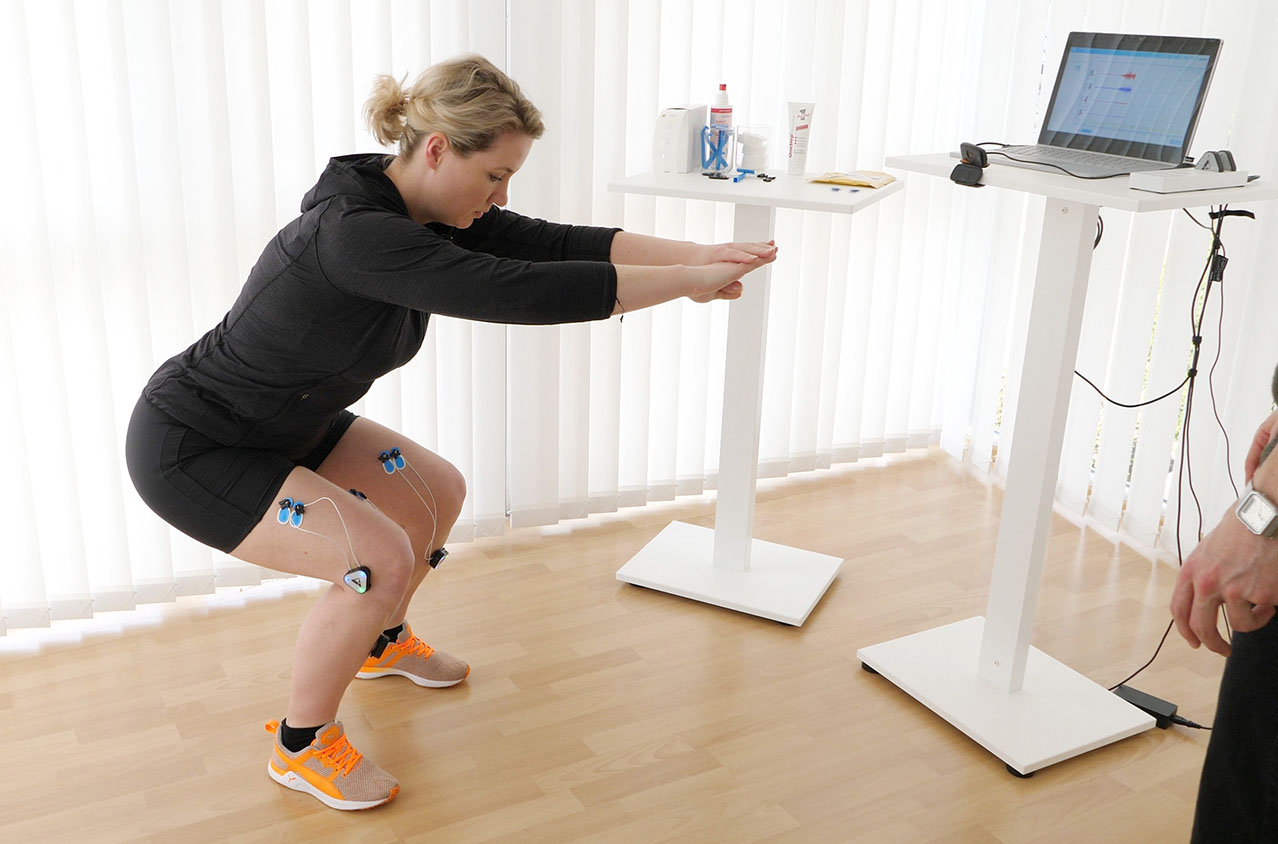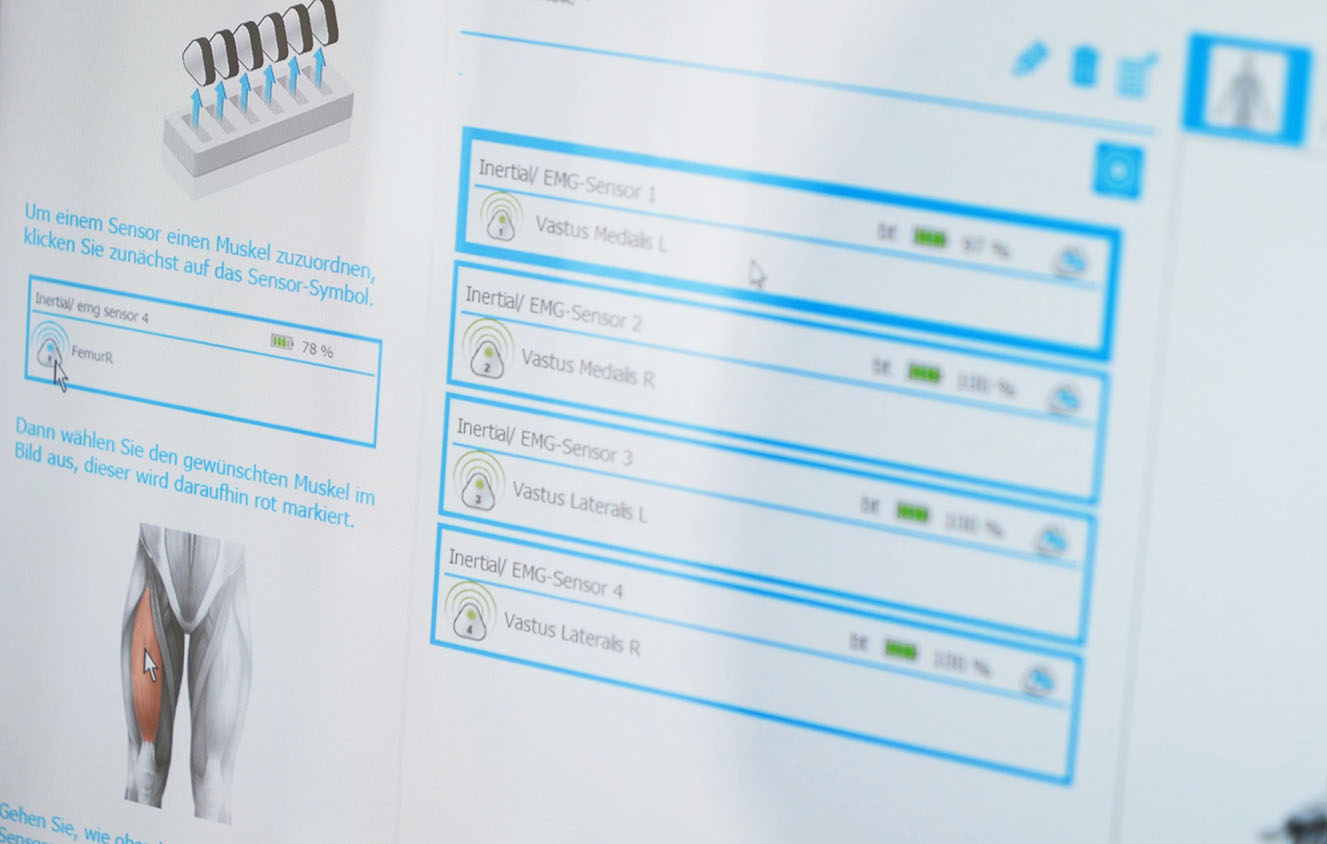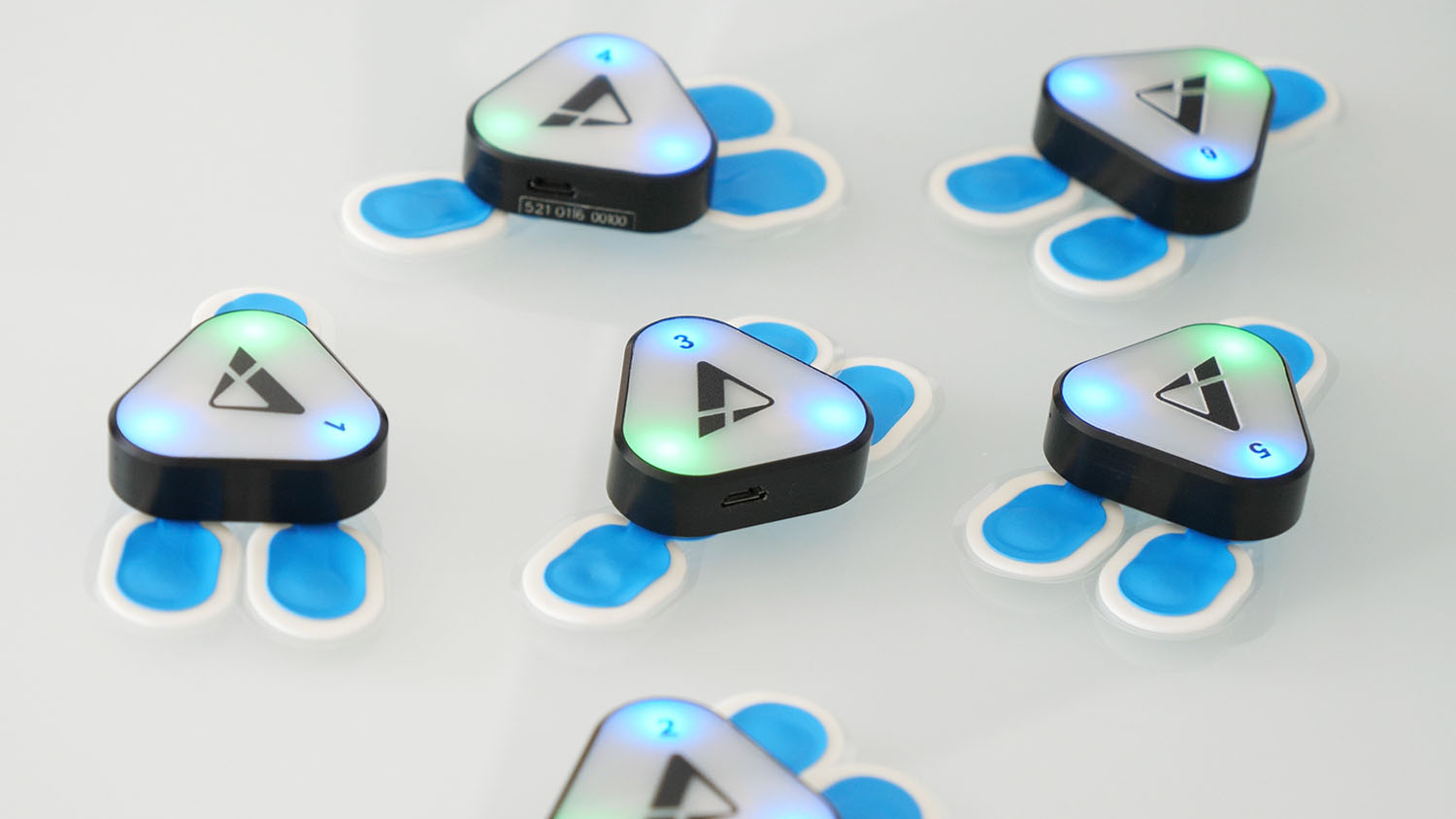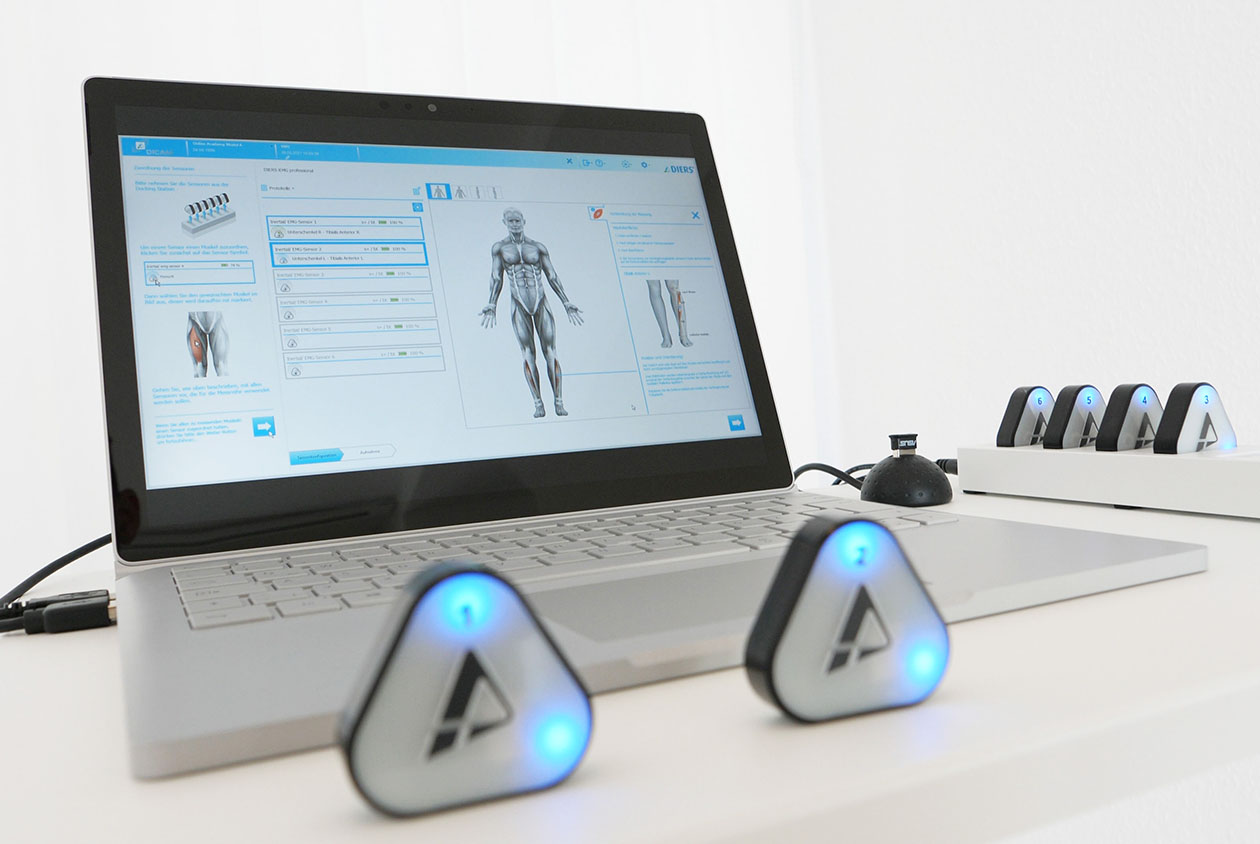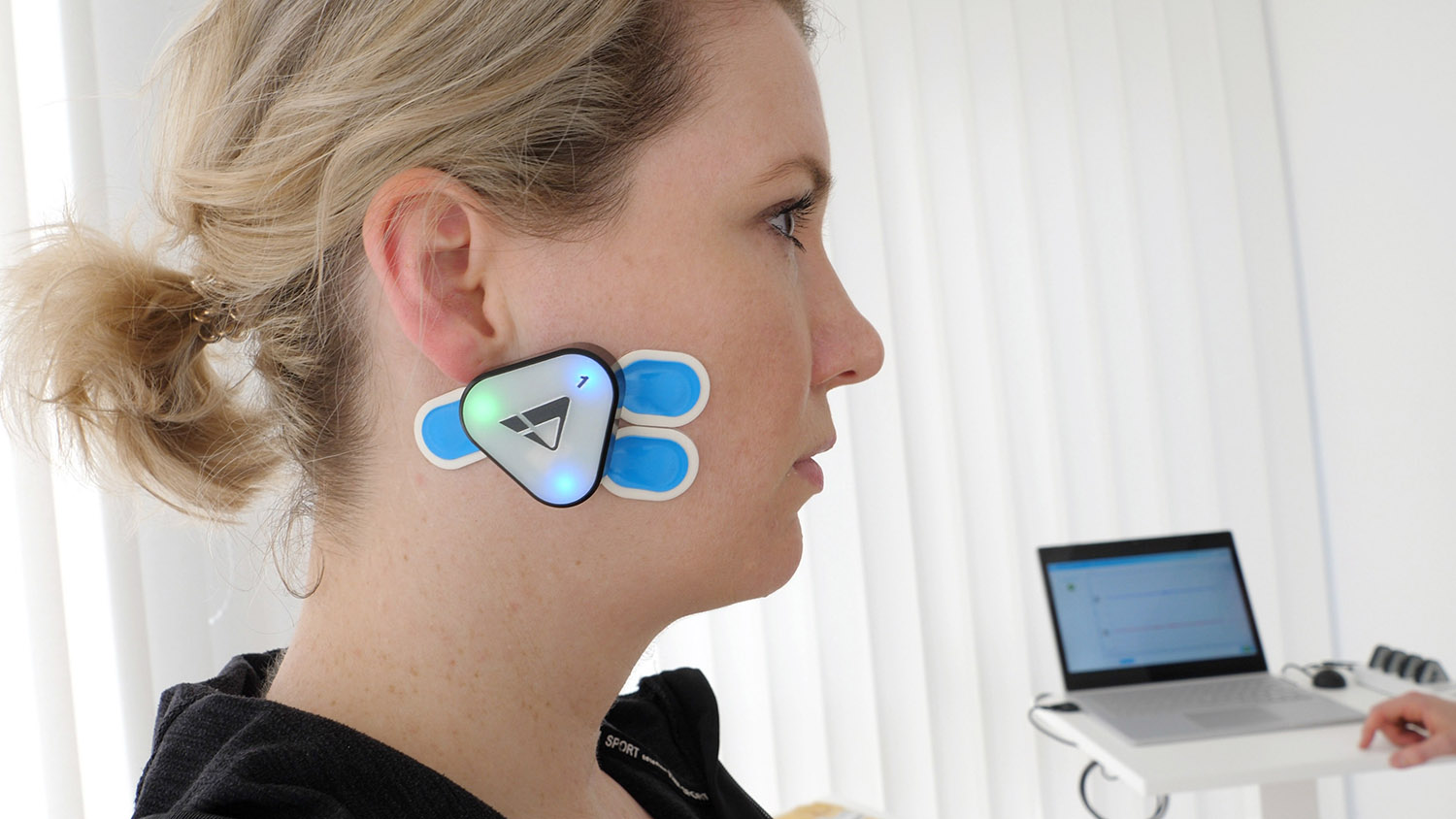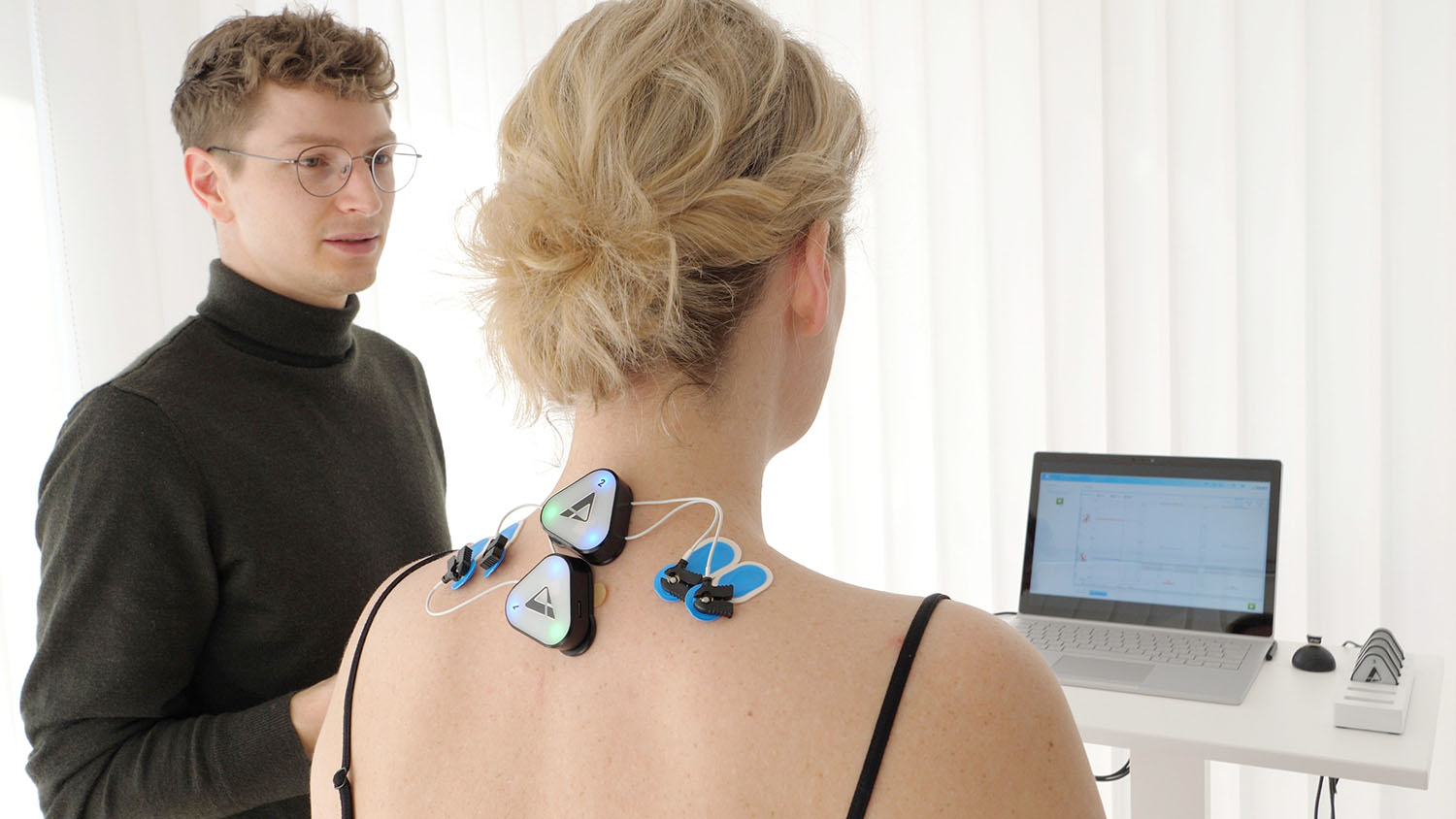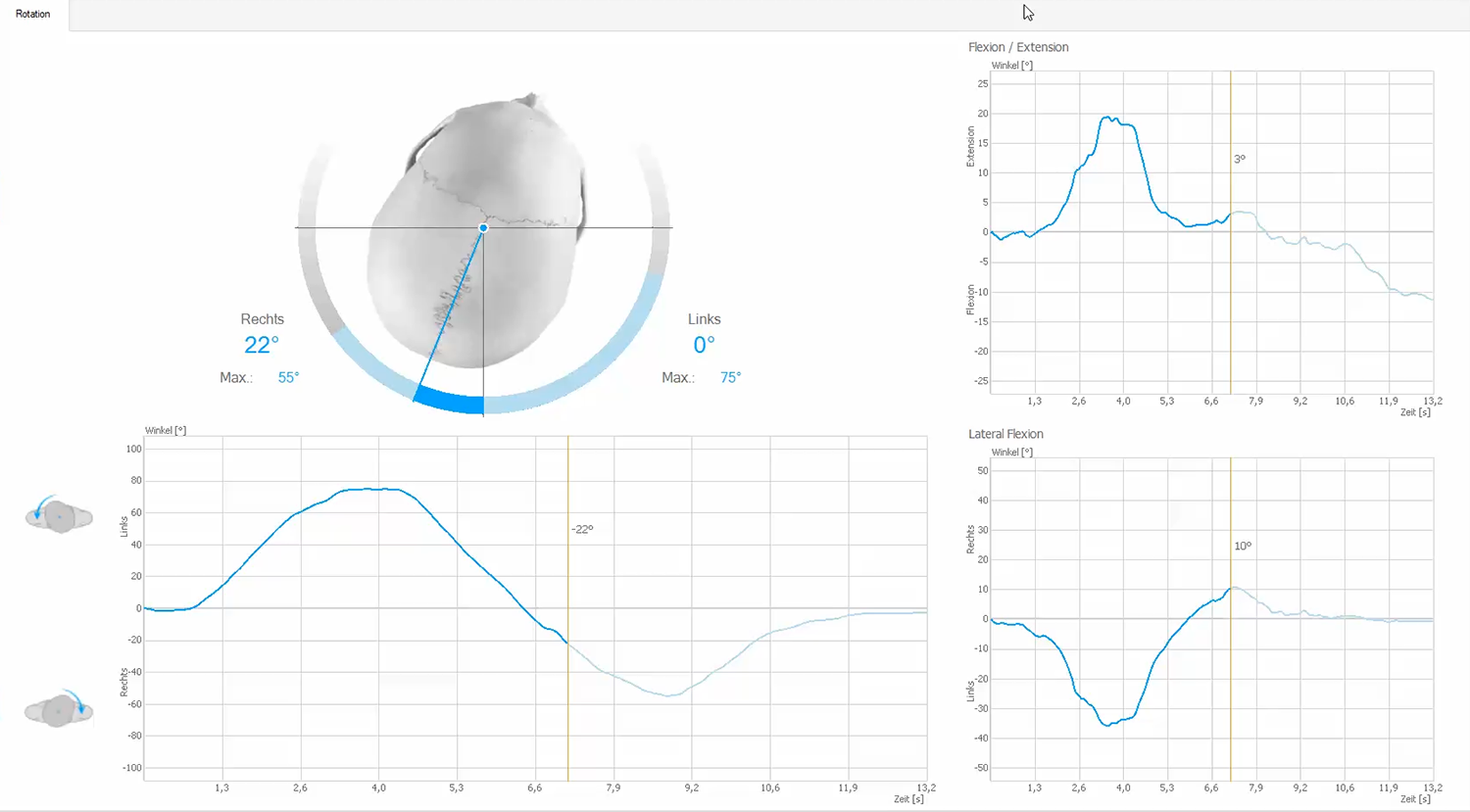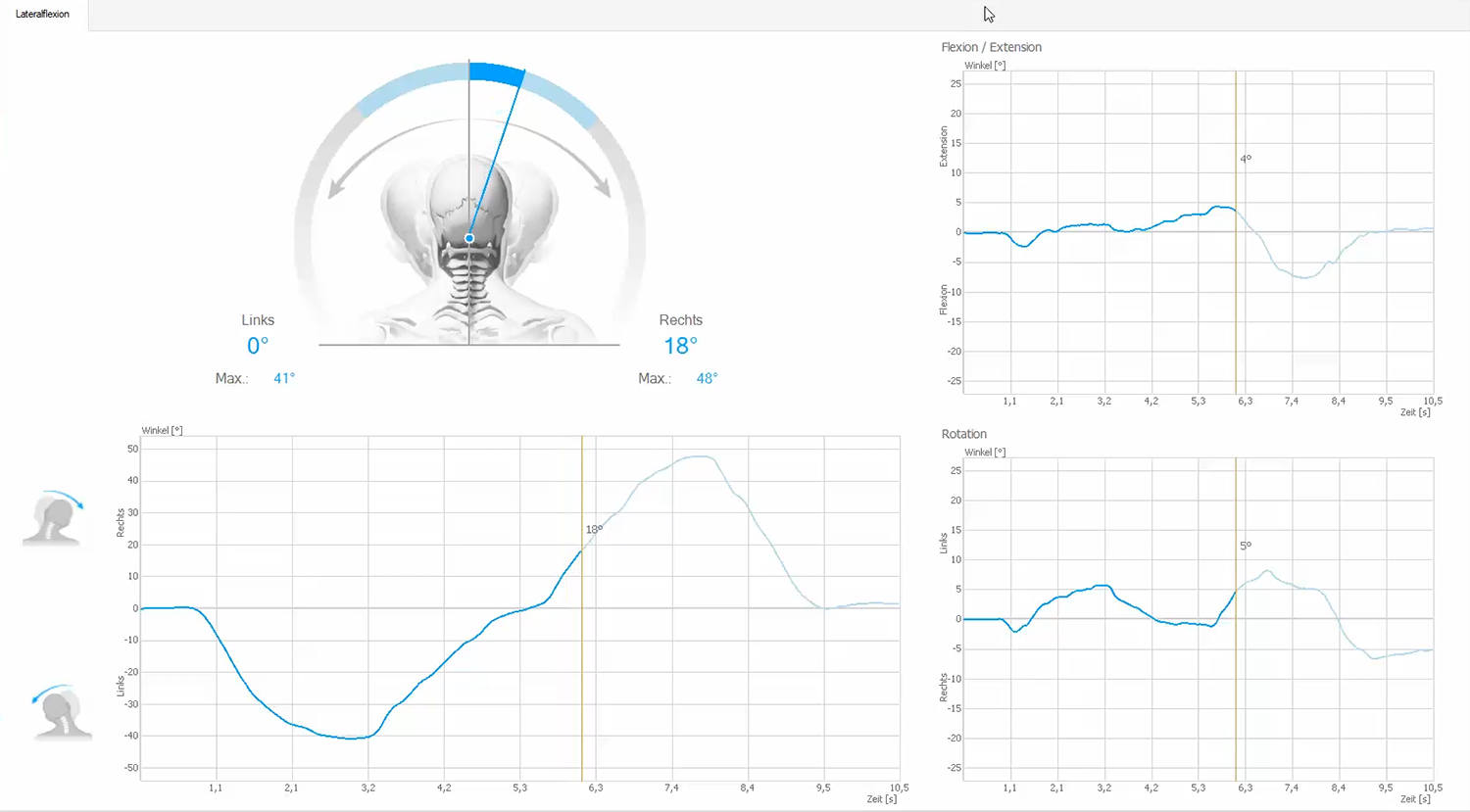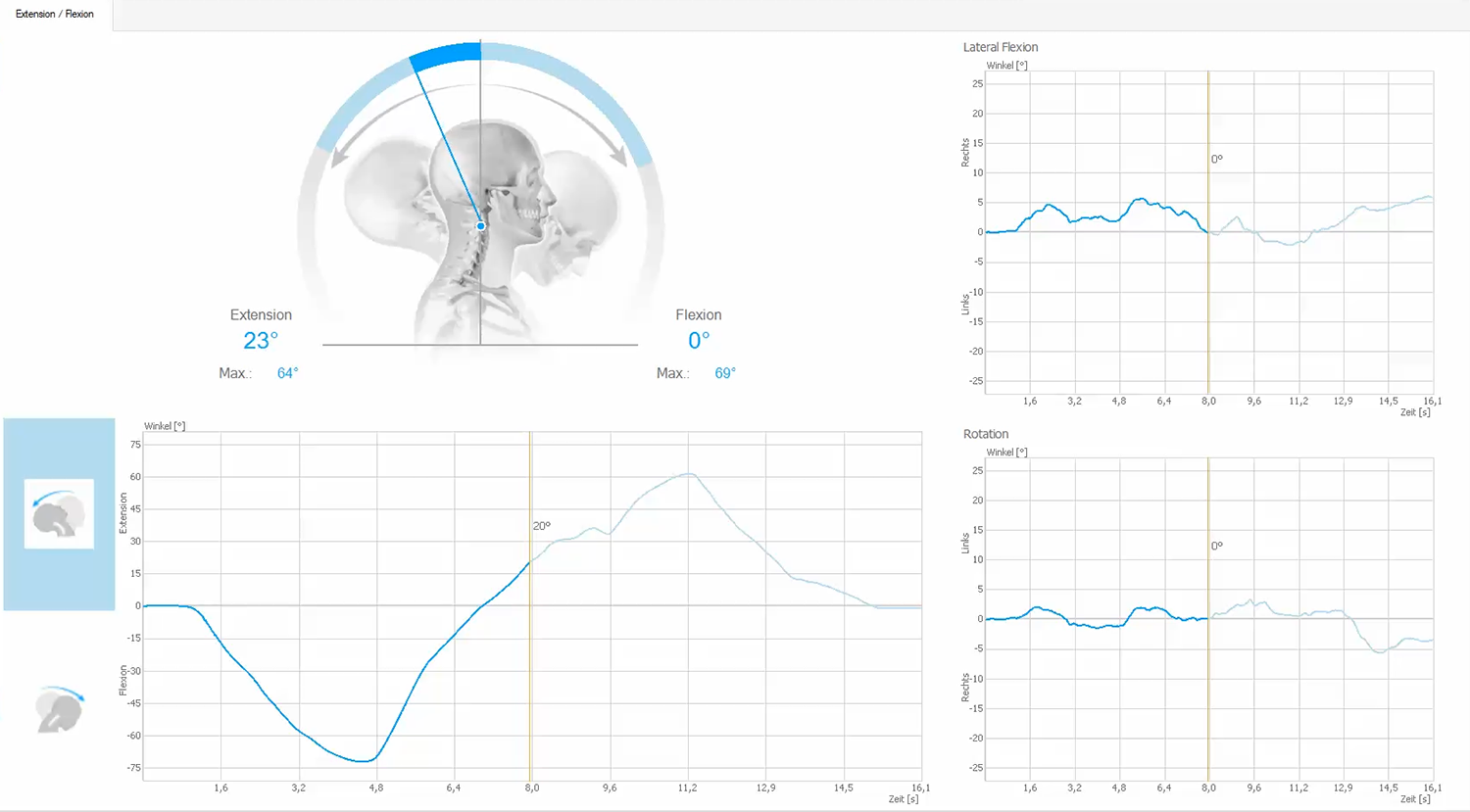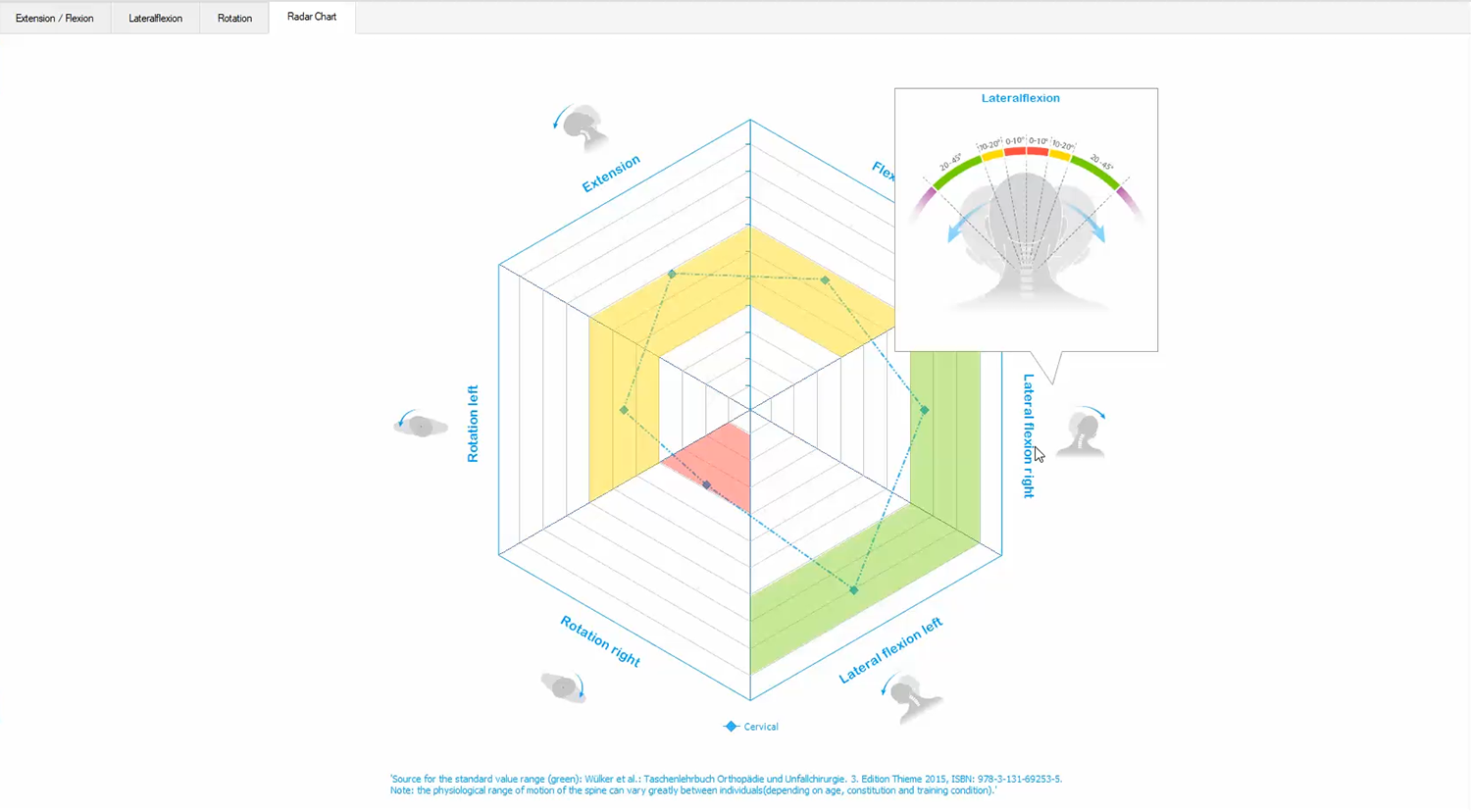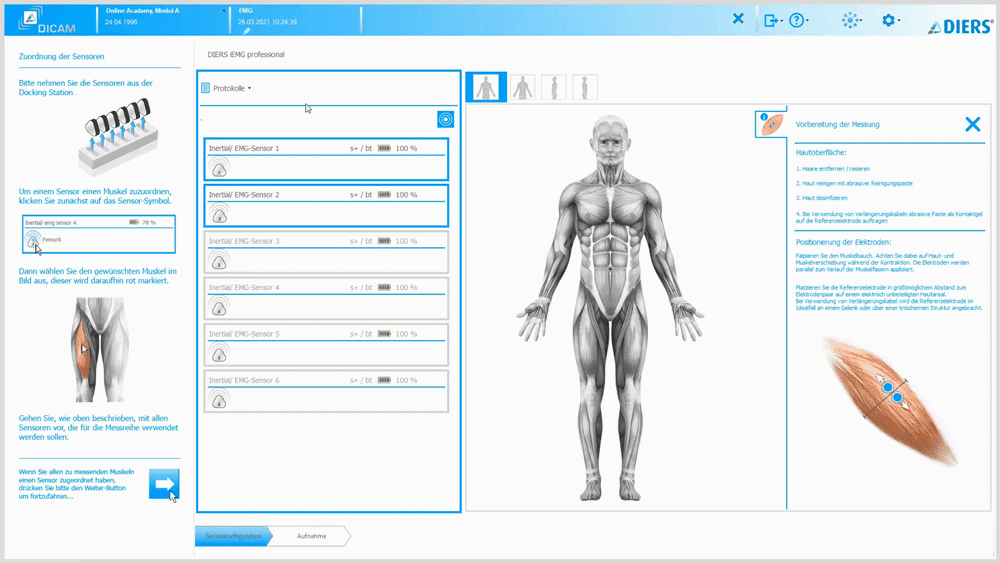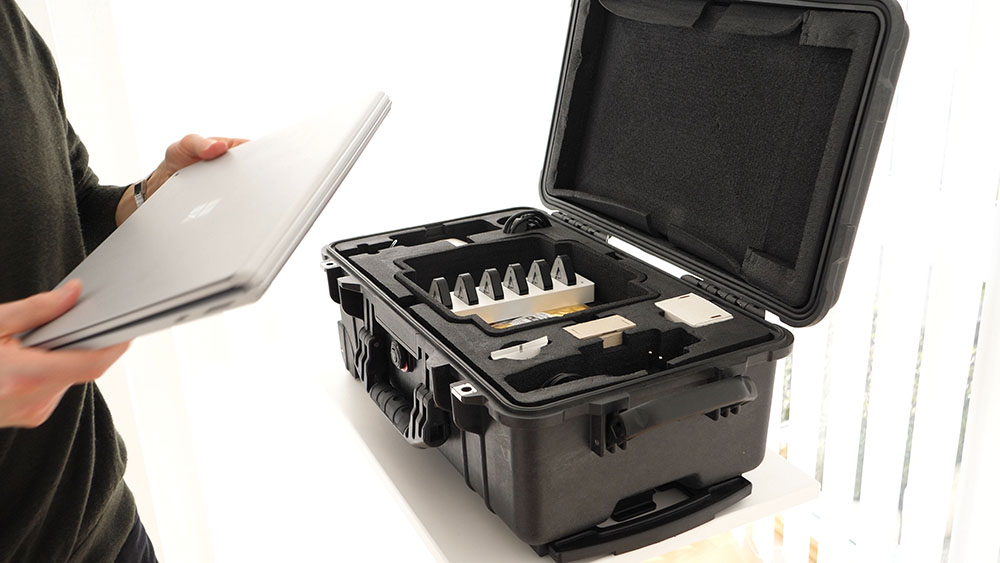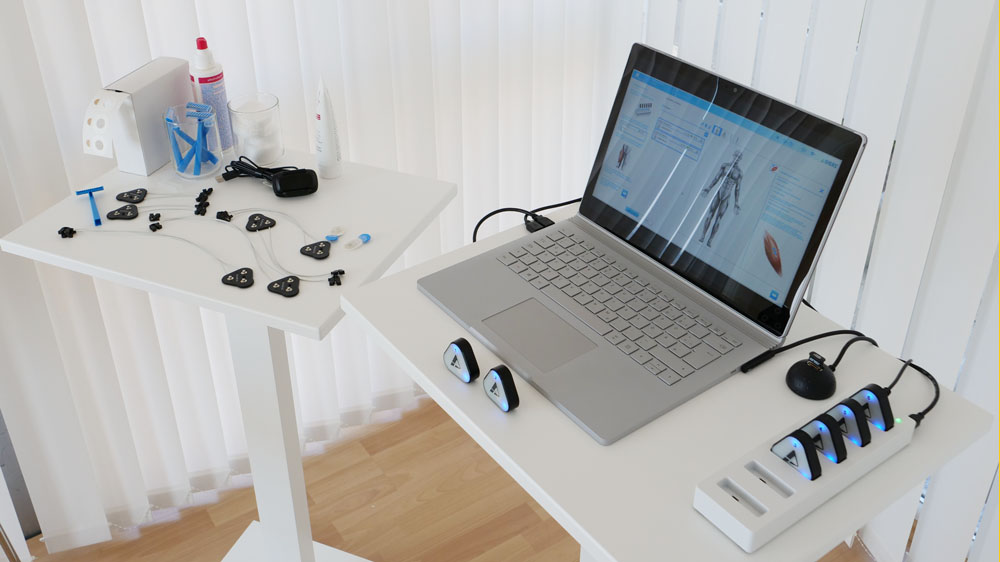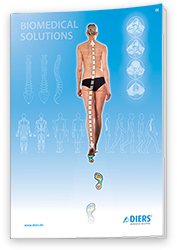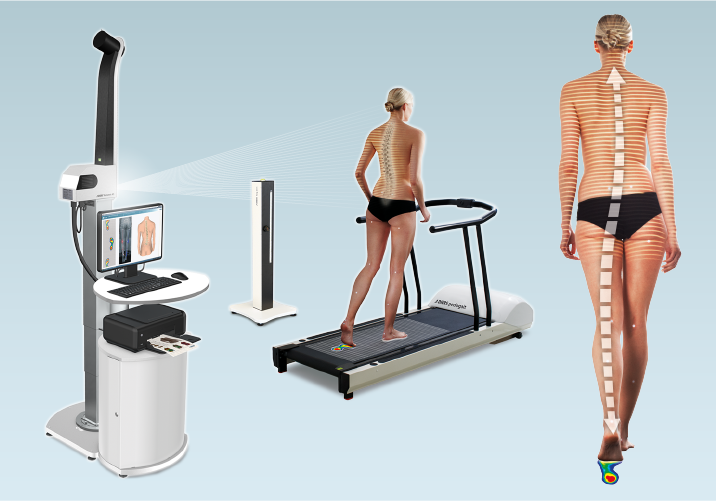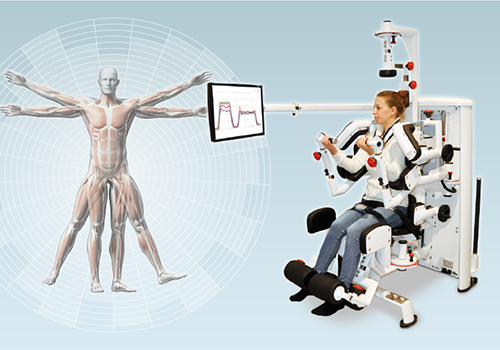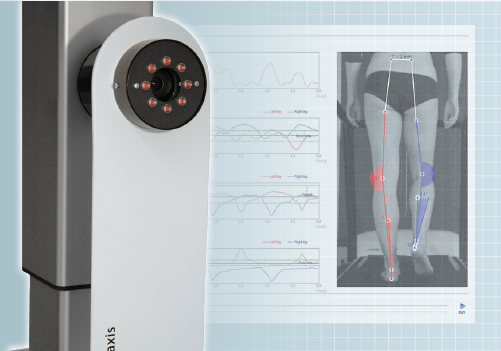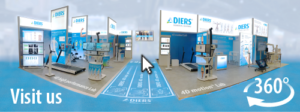DIERS iEMG
2in1-Sensor: Inertial + EMG
The compact 2in1-sensor allows the measurement of muscle activity (EMG) as well as the three dimensional measurement of movement. The wireless data transmission gives a high range of flexibility in application. The integrated intertial sensors have a precise output in three dimensions of the movement and its related angles. By positioning of two sensors on a body segments, the range of motion and the angular position of the intermediate joint can be determined. The integrated surface EMG detects the muscle activity with bipolar electrodes.
CLINIC: Examine muscular imbalances, muscular tension or neurological diseases and many other clinical questions.
THERAPY: Implement your results in targeted biofeedback training – whether to improve self-perception, active and conscious relaxation or to relearn movements.
SCIENCE: With a sampling rate of 2000 Hz, the DIERS iEMG pro mode fulfills the requirements for answering any scientific questions.
EMG Measurement
Inertial Measurement
Application Example:
3D range of motion measurement of the cervical spine
Application Example:
3D range of motion measurement of the spinal column
Clinical Applications:
• Clinical gait / motion analysis
• Sports / Training Analysis
• Ergonomic posture studies
• Neurological problems
• Muscle imbalance / dysfunctions
• Muscle spasms
• Nerve damage
…
Measurement parameters:
• Rotation speed (gyroscope)
• Acceleration (accelerometer)
• Spatial orientation (magnetometer)
• Spatial orientation on inertial data fusion
• Muscle activity (EMG)
Special Features
Usability
Step-by-step instruction for the correct application of the sensors and an efficient workflow.
Flexible
Usable in combination with the DIERS 4Dmotion®Lab or as Stand-Alone-Solution
Mobility
With the optional transport case you have always everything well organized and available.
Why iEMG?
With the 4D spine measurement, we have succeeded in identifying postural complaints and movement patterns; with DIERS myoline, we have turned our attention to muscle strength for the first time. The DIERS iEMG is therefore the logical continuation of our previous research.
The DIERS iEMG sensor is designed in the form of a surface EMG measurement to investigate electrical muscle activity and to treat it by means of biofeedback. The corresponding results are clearly displayed via the DICAM software and offer individual options for subsequent digital signal processing.
The handling is characterized by simple operation and precise instructions. Organize your daily work efficiently by selecting the modes – DIERS iEMG or DIERS iEMG pro. Whether clinical, therapeutic, or scientific, you can adapt the measurement sequence to your individual needs.
Detect imbalances at a glance: automatic scaling of the EMG signal for side to side as well as agonist-antagonist comparisons. Use biofeedback training for targeted control or relaxation of the musculature after injuries, surgeries or chronic injuries. Possibility of interindividual normalization by MVC (Maximum Voluntary Contraction). Make statements about the recruitment of a muscle as well as its fatigue state.
The results are available for further processing or for statistical analysis as a data export to external software.
Inertial measurement technology is integrated in every DIERS iEMG sensor. This makes it possible to precisely record and display the course of a movement in three-dimensional space.
Whether beginner or expert, the DIERS iEMG offers added value for everyone in their daily practice.
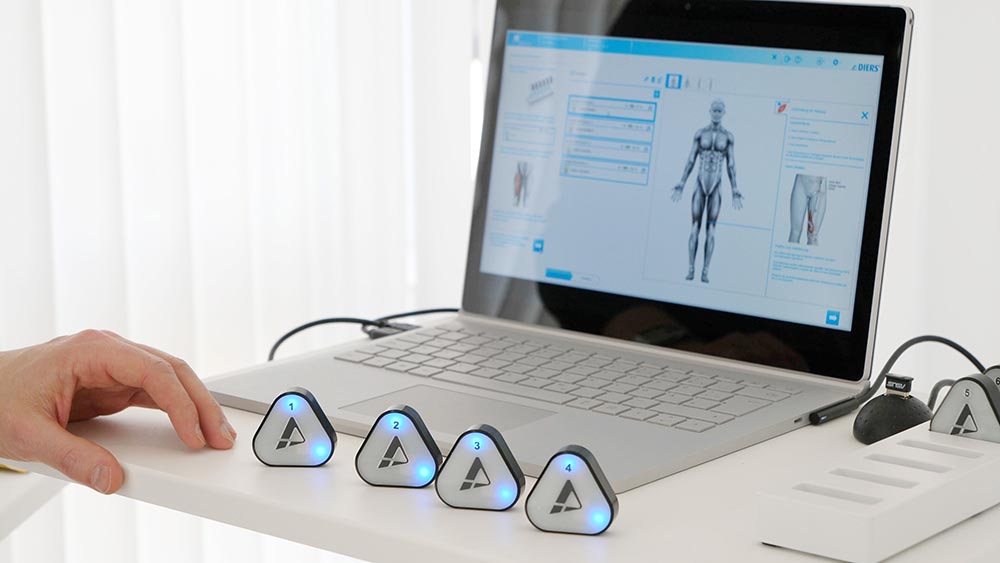
COMING SOON!
• Simultaneous measurement: EMG + Inertial
• Simultaneous whole-body motion analysis (with up to 16 inertial sensors)
• Extent of movement calculated with a biomechanical pattern
